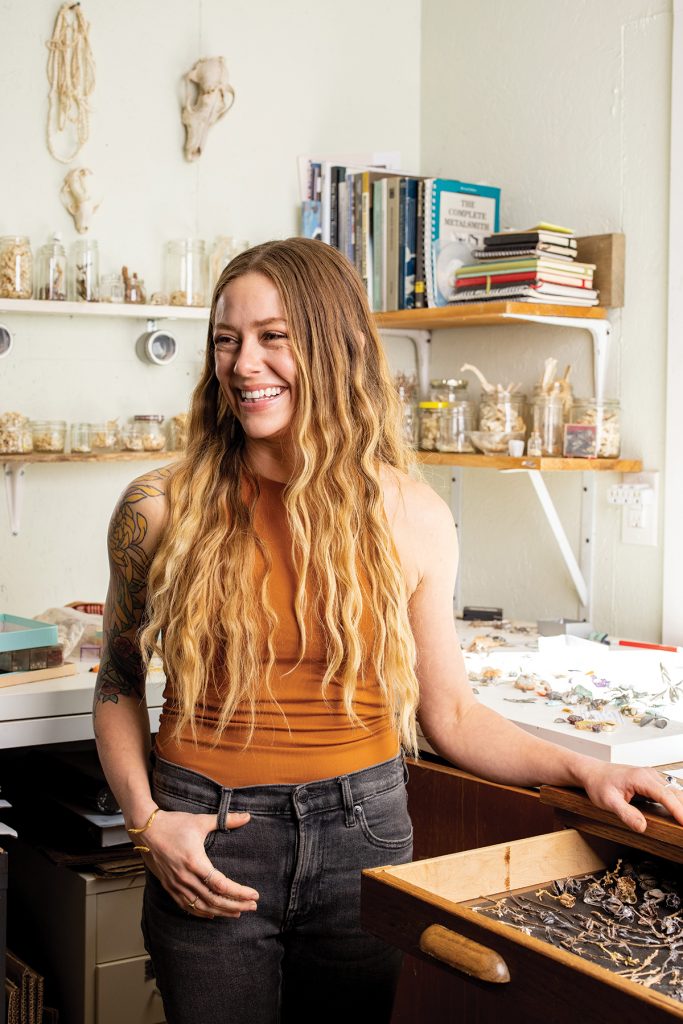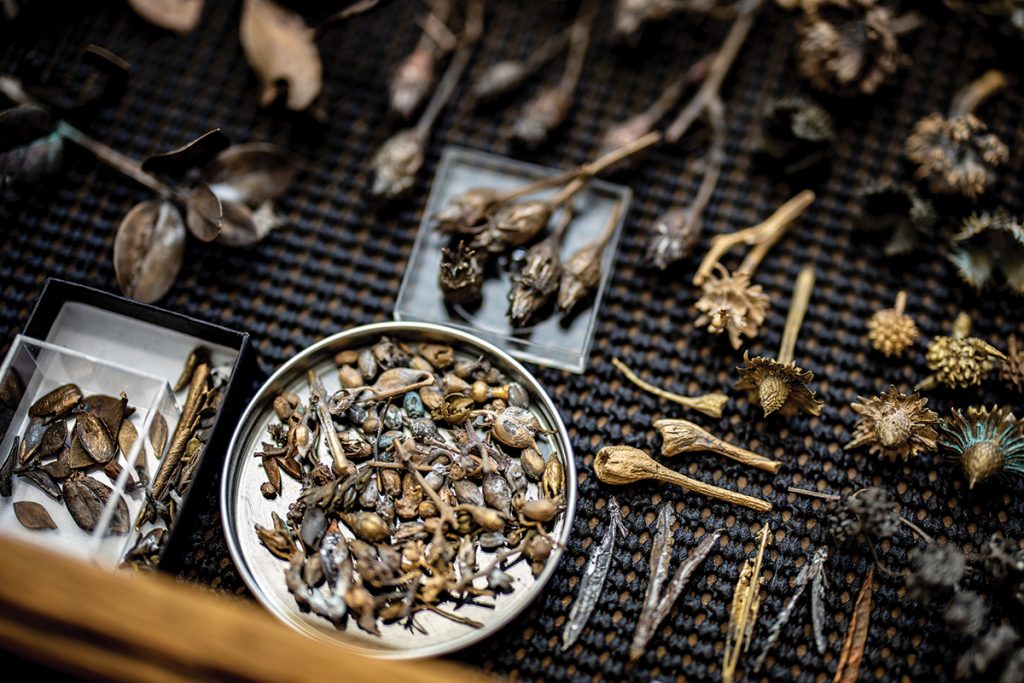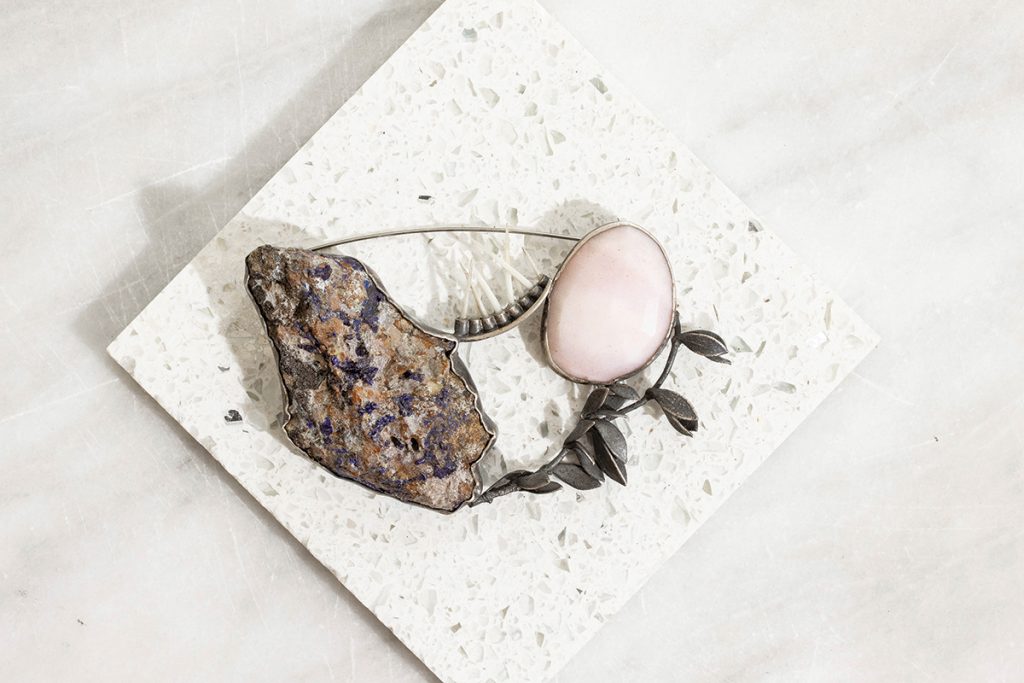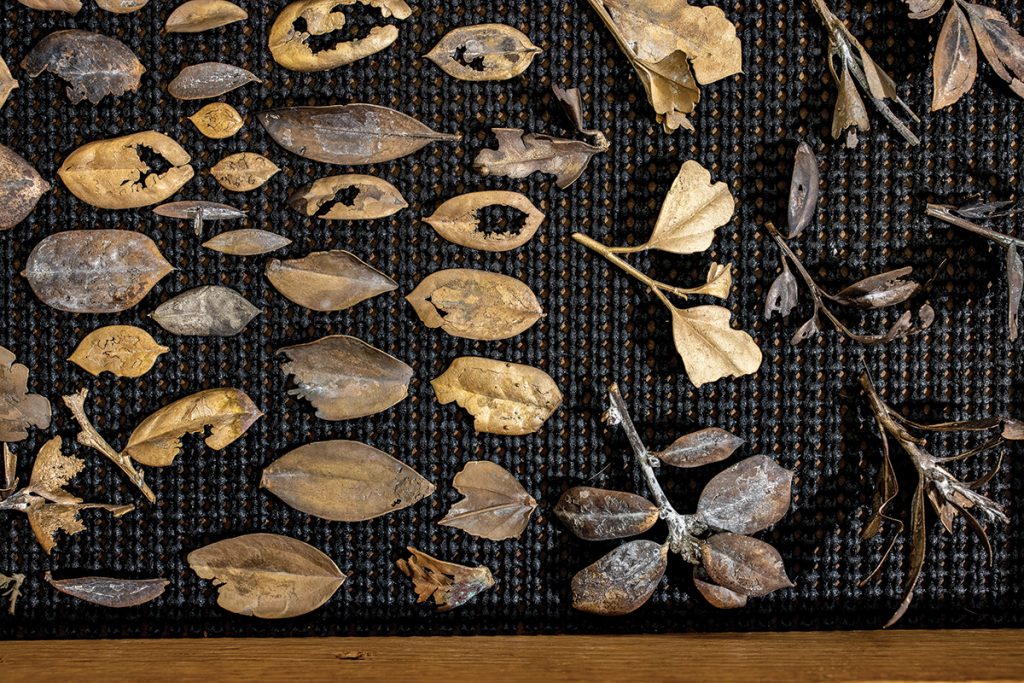
Anna Johnson doesn’t view her work as macabre.
Portrait by Jack Robert
Anna Johnson dug a hole in her backyard and buried the dead snake that had been in her freezer for weeks. Along with it, she buried a frozen groundhog and a squirrel.
She often has dead animals in her freezer because friends bring her found roadkill all the time. It’s become a crucial element of her art. But it’s not taxidermy, and it’s not a gesture of the macabre — not fringe art meant to shock.

Photo by Jack Robert
“Personally, I don’t connect it with any attempt to accentuate death or the grotesque,” says Johnson.
Instead, she dutifully exhumes the bodies a few months later, brushes away the dirt and feasting bugs, and cleans the bones. And then she uses those bones to fashion elegant jewelry featured in galleries around the world.



Photos by Jack Robert
“I like to think that I’m giving them second life,” Johnson says. “I want to showcase the beauty of these forms — really intriguing forms that just happen to have these cultural contexts behind them.”
All of the elements in Johnson’s work are drawn from the earth in an intimate way. On a particularly stunning necklace, she frames squirrel and muskrat mandibles with wildflowers cast in silver, while azurite rainbow moonstone and titanium hematite adorn the edges of the bone. On a pair of her earrings, beetle wings hang from silver-set raw turquoise. Holly hibiscus pods poke out from behind pyrite with calcite, while black moonstones dangle from a rodent skull on a brooch.

Photo by Jack Robert
The designs, though incredibly intricate, are largely improvisational, and mostly dictated by the elements themselves. “I cannot get attached to anything. I just collect things that speak to me, and then I work with them how I can — but I can’t plan ahead.” The result is a massive catalog of work in a distinct style where nearly every piece is unique.
And that takes time. “I love to reinvent a wheel,” says Johnson, who studied metalwork at Appalachian State University. “I love to pick apart the process … I’m probably not as fast as a lot of people are in the studio, but I have to realize that that is okay, because the product I get out of being thoughtful and in the moment makes the work feel special. … Art is a language, and good art makes you feel things.”

Photo by Jack Robert
Her work has found its way to galleries and showrooms from New York to Santa Fe, from London to Brazil. A regular teacher at regional craft schools Penland and Arrowmont, she stresses art as a system of learning and understanding the wider world.
“What really drives my work is using those materials — the bones and the plants — in such a way that it creates a beautiful object, but also pulls something that might not seem special or valuable out of its context.
“By making it feel more precious or elegant in this form, it can create a connection with someone [who] wouldn’t have felt it that way in any other context.”
Anna Johnson, Asheville. Johnson’s work is sold online at her web shop (annajohnsonjewelry.com) and via studio appointments (annajohnsonjewelry@gmail.com); at Mora Designer Jewelry (9 West Walnut St., 2A, Asheville, moracollection.com); Woodlands Gallery (419 North Main St., Hendersonville, woodlandsgallerync.com); and at Penland Gallery at Penland School of Craft (penland.org). Johnson will be teaching at Penland School of Craft in May and at Arrowmont School of Arts and Crafts in July.